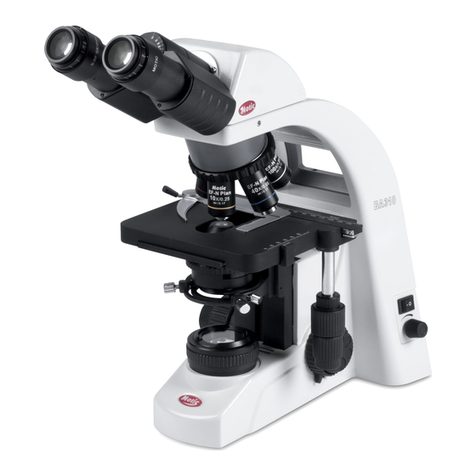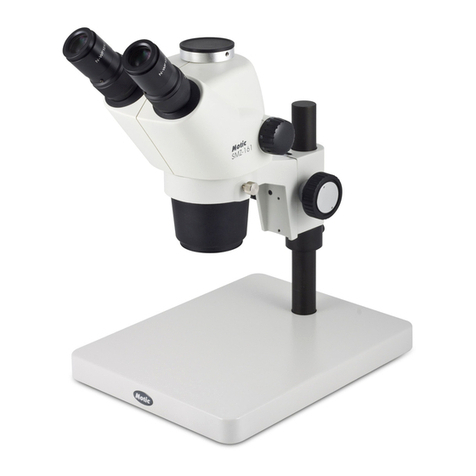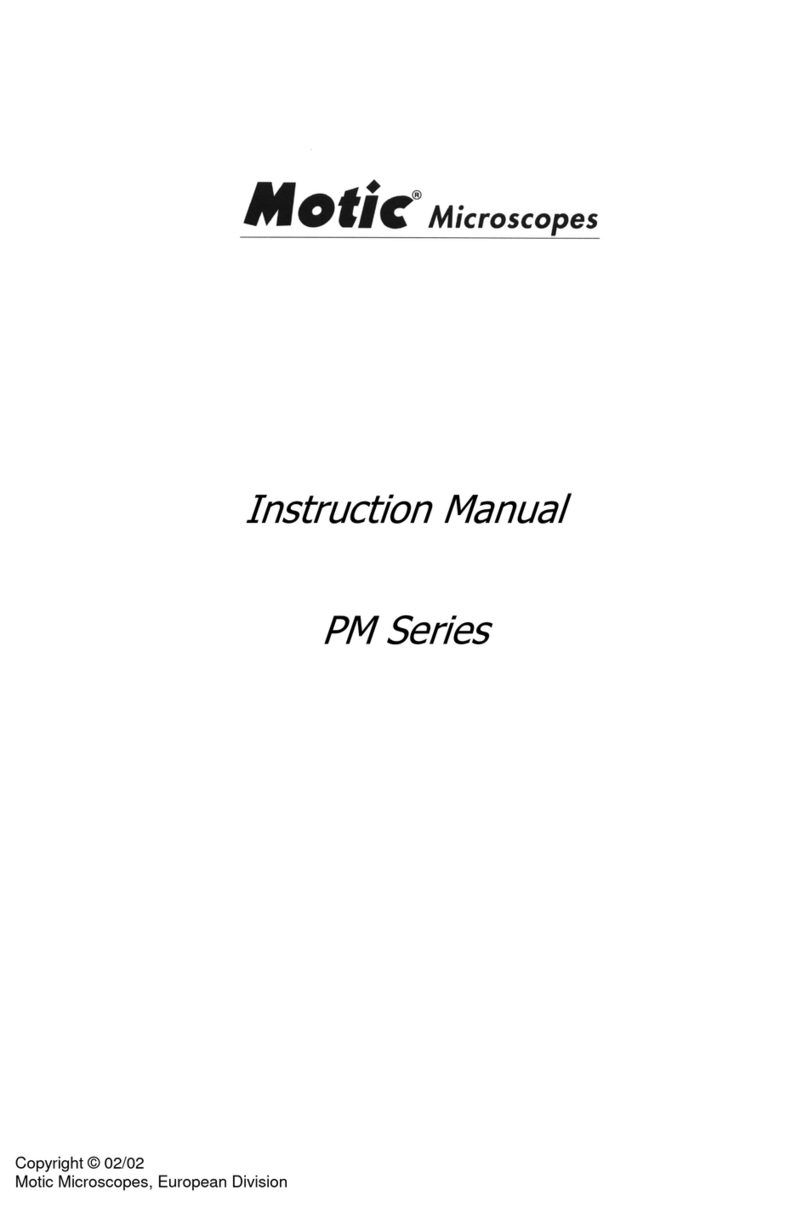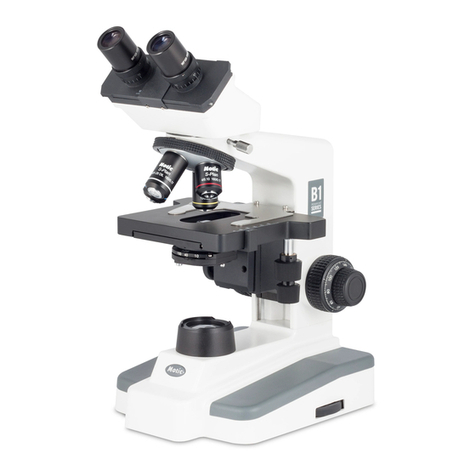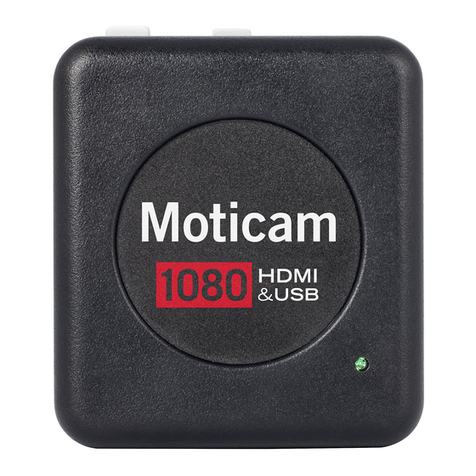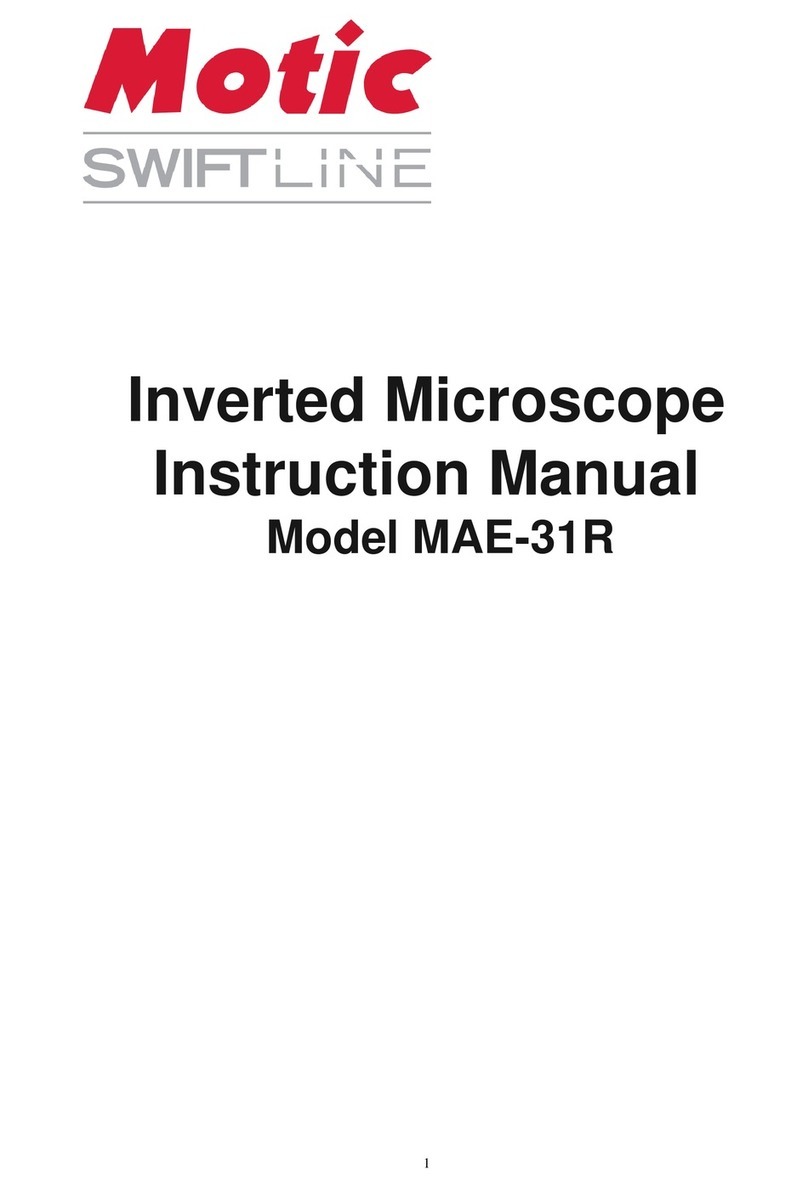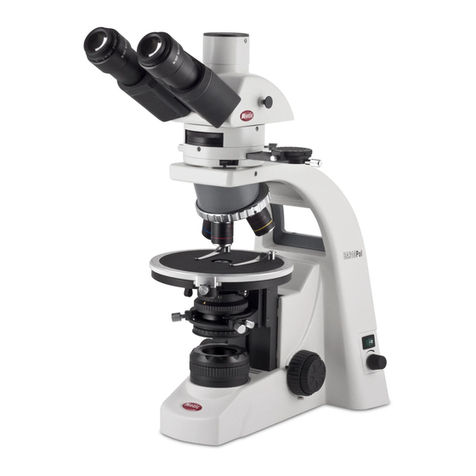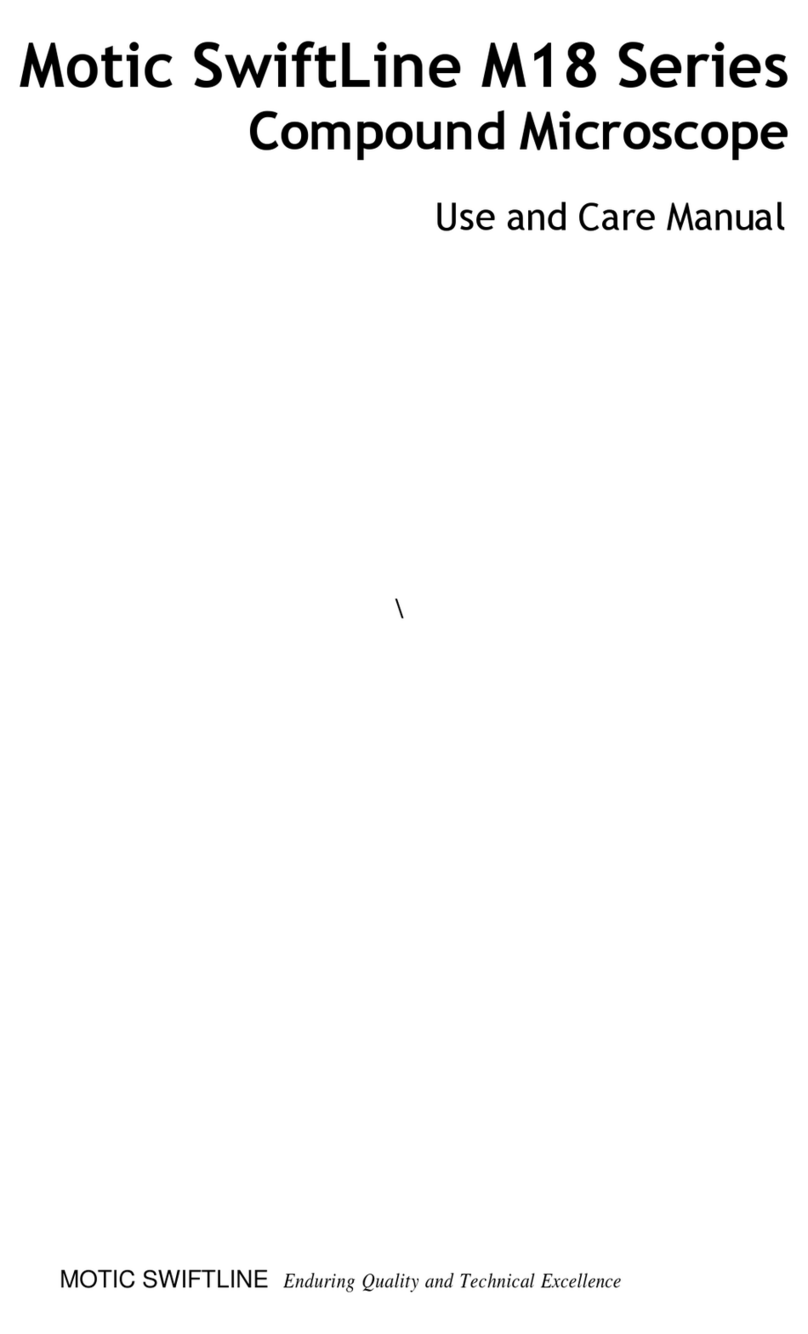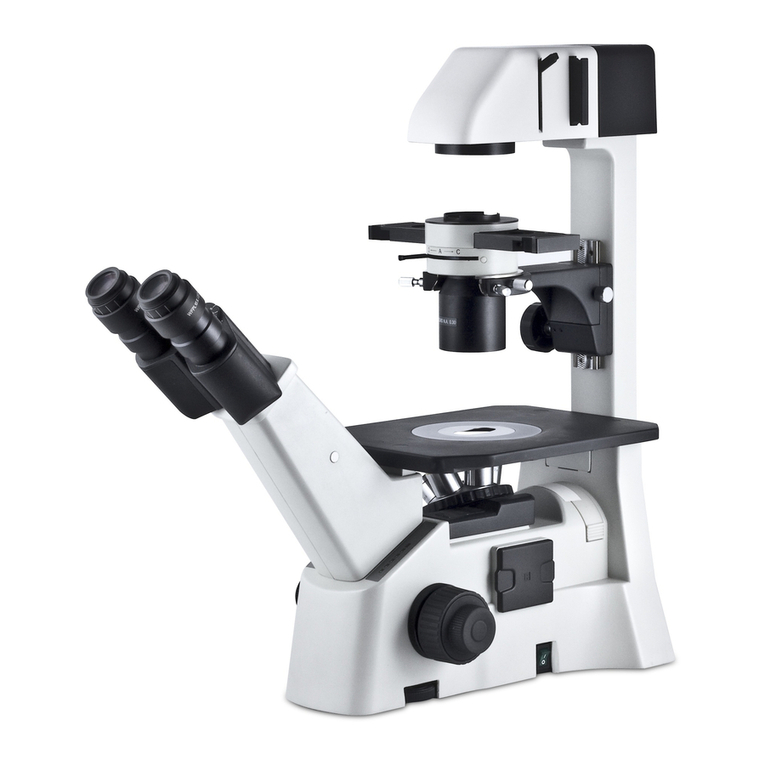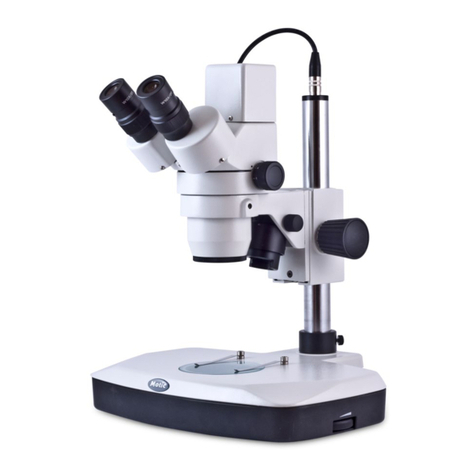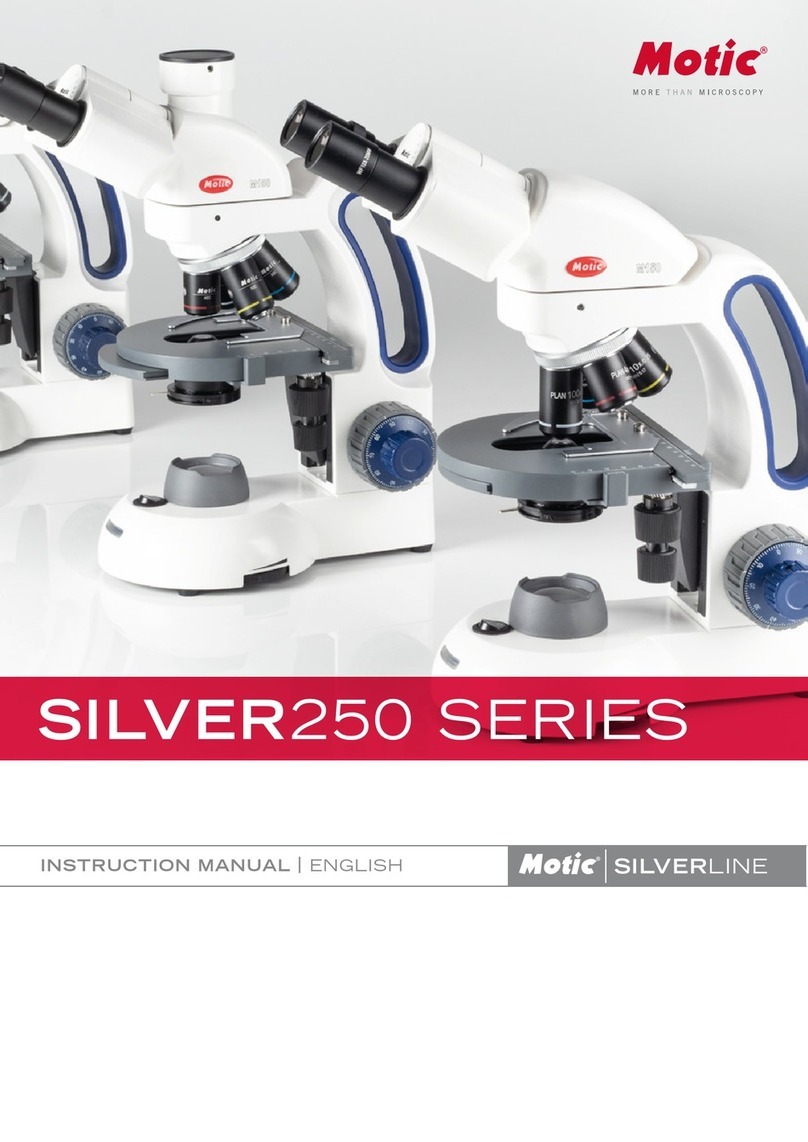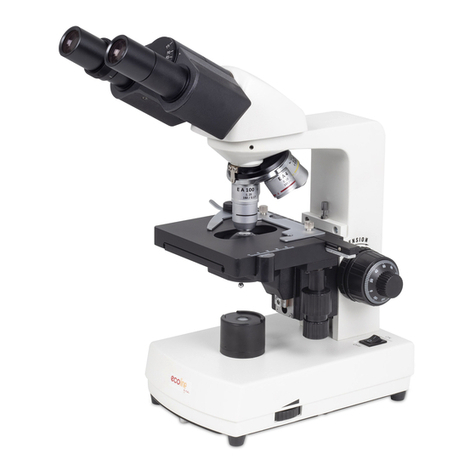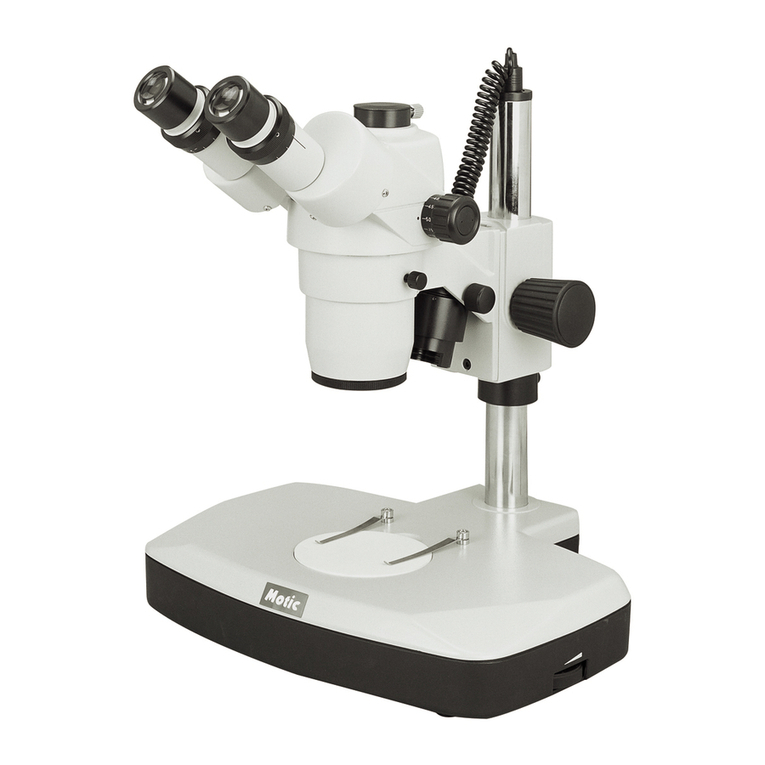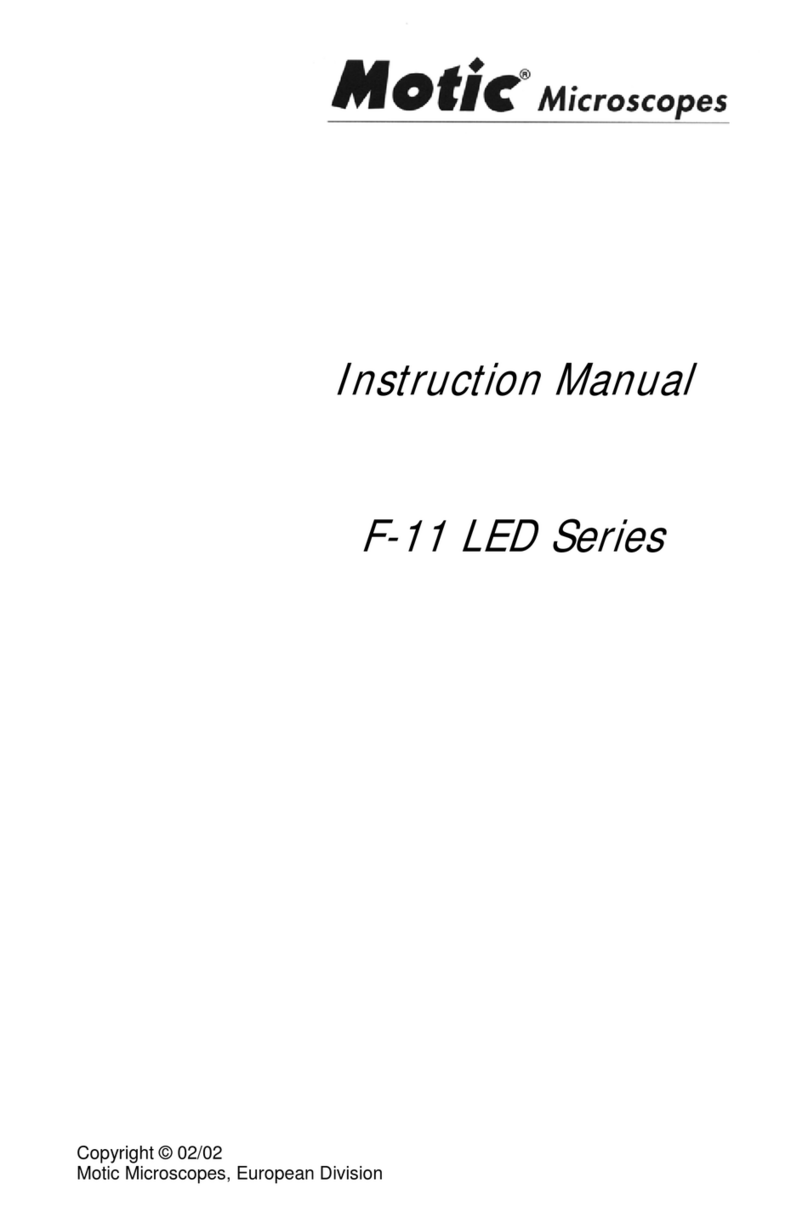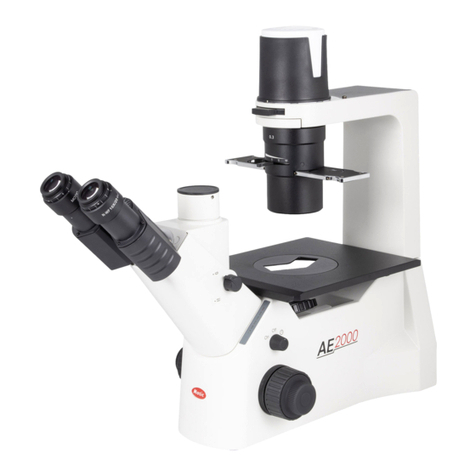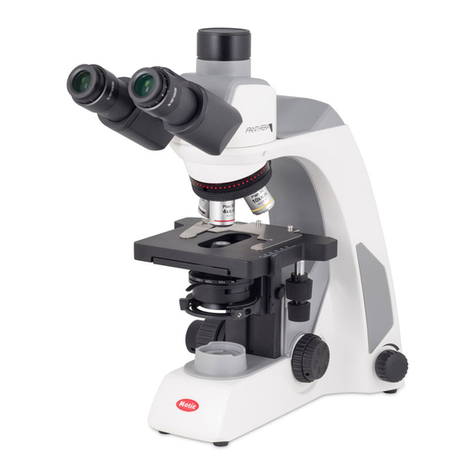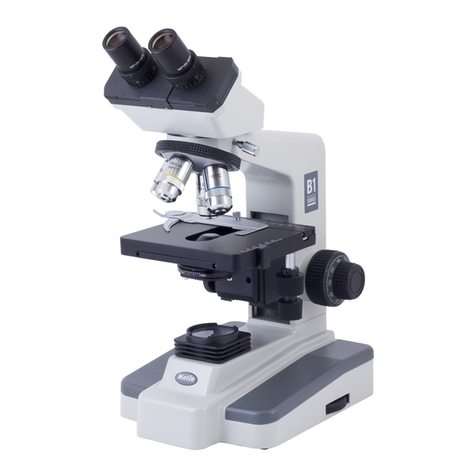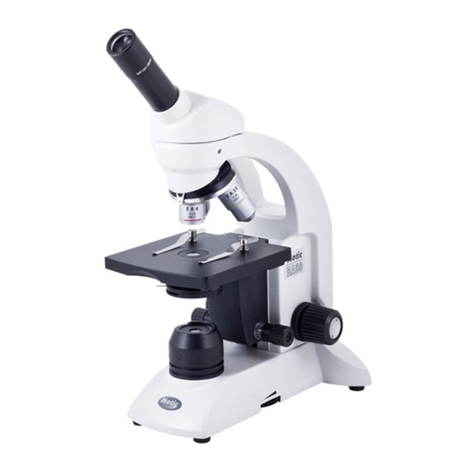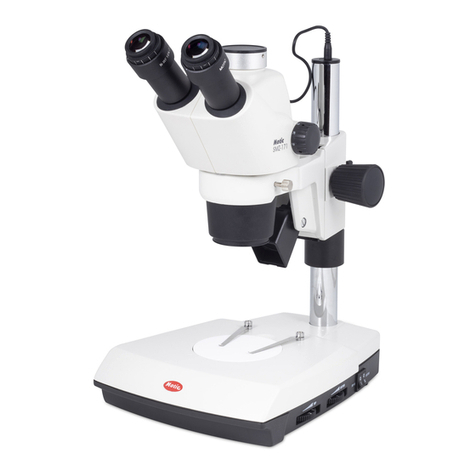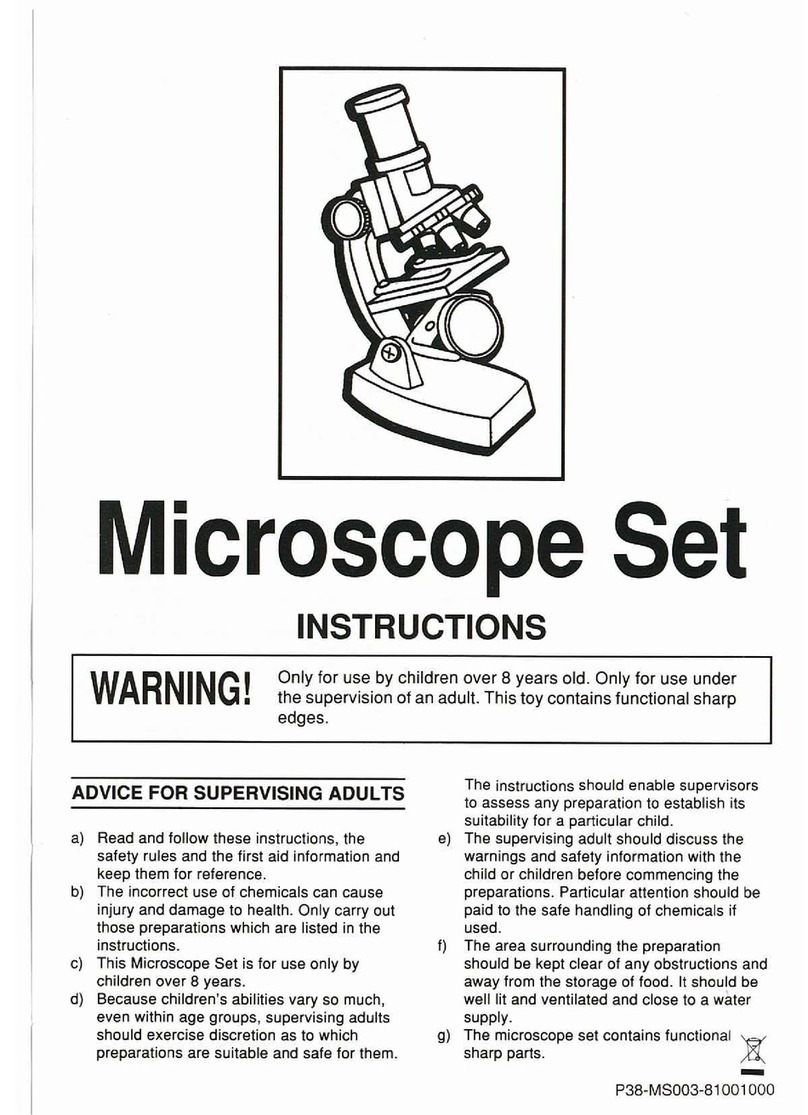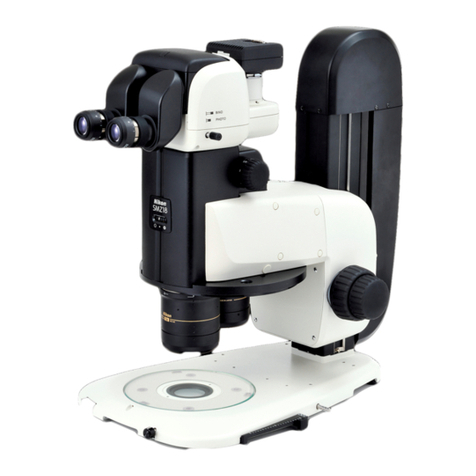
6
power the illumination system for approximately 40 hours. If the
microscope is used in the same location, the A/C adapter can remain
plugged-in without damage to the battery or recharging system.
A battery power indicator meter is located in the front of the base.
Each blue LED light indicates the level of remaining battery power.
When the battery is fully charged, all 5 LED lights will be illuminated.
The battery will need to be recharged when there is only 1 illuminated
LED remaining on the meter.
USING YOUR SWIFT MICROSCOPE
1. Use the stage clips or slide holder mechanism to secure the slide in
place. Be sure the specimen is centered over the opening in the
stage.
2. Rotate the nosepiece to place the lowest power (4X) objective over
the specimen. Be sure the objective “clicks” into position.
3. Turn on the illumination by pressing the on/off switch towards “1”
4. Open the iris diaphragm to its largest aperature.
5. While viewing through the eyepiece(s), rotate the coarse focus knob
slowly and carefully to bring the specimen into focus. The specimen
may require some centering in the field of view at this time. By
using the fine focusing knob, slowly and carefully refine the focus to
clearly observe the fine details of the specimen.
6. If the image of the specimen appears pale, the aperture of the iris
diaphragm should be slowly closed until the details of the specimen
are sharply defined. If the specimen appears dark, slightly open the
diaphragm.
Please note: a smaller iris diaphragm aperture (opening) increases the
contrast in the image while a larger aperture decreases the contrast.
(The diaphragm is not intended for controlling the brightness of the
illumination). A good procedure to follow in selecting the proper
opening is to start with a large aperature and reducing it until the fine
detail of the specimen is in exact focus. Using an inappropriate aperture
results in a “washing out” of the image. Care must be exercised not to
reduce the aperture too much to gain high contrast, as then the fine
structure in the image of the specimen will be destroyed. Reducing the
aperture increases contrast and depth of focus, but it also reduces
resolution and causes diffraction. Example: The aperture for the 10X
objective will not be the same as for the 40XRD objective, since the
angle of the required light is determined by the numerical aperture
(N.A.) of the objective. The proper aperture of the diaphragm can be
easily achieved after minimal experience with the microscope.
